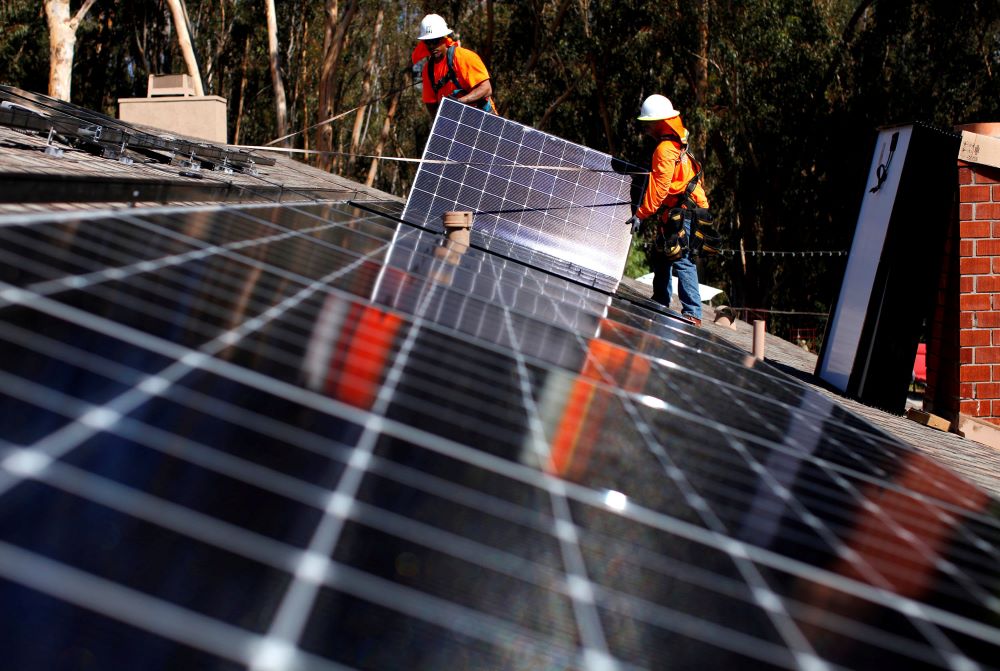Leading the Charge Towards Clean and Green Energy in Future
Unleashing the potential of solar energy for a brighter world.
The emergence of solar energy solutions technology represents a vital step towards a more sustainable future, offering innovative solutions for meeting the world’s growing demand for renewable energy.

Night Time Solar Plant
A Night Time Solar Plant is a type of solar power plant that is designed to continue generating electricity even after the sun has set. These plants use thermal energy storage systems to store the excess energy generated during the day, which can then be used to power turbines and produce electricity during the night. The stored energy is typically stored in molten salt, which can maintain a high temperature for several hours without losing its energy. Night Time Solar Plants are an important development in renewable energy technology, as they enable solar power to be used as a reliable and continuous source of electricity.
Perovskite solar cells
Perovskite solar cells are a type of thin-film solar cell that has shown great potential as a cheaper and more efficient alternative to traditional silicon-based solar cells. Perovskite solar cells are made of a unique material that has a crystalline structure similar to that of the mineral perovskite, hence the name. The material is highly efficient at absorbing light and converting it into electrical energy. Perovskite solar cells have been found to have high power conversion efficiencies of up to 25%, which is comparable to traditional silicon-based solar cells. Additionally, perovskite solar cells are lightweight and flexible, which makes them ideal for use in a wide range of applications, including in wearable technology and portable electronics. Although perovskite solar cells are still relatively new and their long-term stability is yet to be fully understood, they have the potential to revolutionize the field of solar energy and accelerate the transition to a more sustainable energy future.


Sun-Tracking Solar Cells
Sun-tracking solar cells are a type of solar panel that is designed to follow the sun’s movement throughout the day in order to optimize the amount of sunlight they receive. These solar cells are equipped with a tracking system that allows them to move and adjust their orientation in real-time, ensuring that they are always facing the sun at the most optimal angle. By tracking the sun, these solar cells are able to generate more electricity than fixed solar panels, which only receive direct sunlight for a limited amount of time each day. Sun-tracking solar cells are particularly useful in regions with high levels of solar radiation and where space is limited, as they can generate more electricity per unit area than fixed solar panels. While sun-tracking solar cells can be more expensive and require more maintenance than fixed solar panels, their increased efficiency and energy output make them a popular choice for large-scale solar energy projects.
Printable solar cells
Printable solar cells, also known as organic solar cells or flexible solar cells, are a type of solar technology that allows solar cells to be printed onto flexible materials such as plastic or paper. These solar cells are made of organic materials such as polymers or small molecules that can be dissolved in a solvent and printed onto a substrate using a process similar to inkjet printing. Printable solar cells are lightweight, flexible, and inexpensive to produce, which makes them an attractive option for a wide range of applications, including wearable technology, portable electronics, and building-integrated photovoltaics. Although the efficiency of printable solar cells is currently lower than traditional silicon-based solar cells, research into improving the efficiency of these solar cells is ongoing, and they have the potential to become an important source of renewable energy in the future.


Solar Windows
Solar windows are a type of photovoltaic technology that allows windows to generate electricity from sunlight. These windows are made of a transparent material, such as glass, that has been coated with a thin layer of solar cells. They can be integrated directly into a building’s architecture, making them a more aesthetically pleasing option for generating electricity. Solar windows can help to reduce a building’s energy consumption and are particularly useful in urban areas where space for traditional solar panels is limited. However, solar windows currently have lower efficiency and higher costs than traditional solar panels, and research is ongoing to improve their performance and reduce their cost.
Floating Solar Panel
Floating solar panels are a promising and innovative solution for generating renewable energy. By utilizing bodies of water such as lakes, reservoirs, or ponds, floating solar panels offer a space-efficient and cost-effective alternative to traditional solar panels installed on land. In addition to generating clean energy, floating solar panels also help to reduce water evaporation and improve the quality of the water. However, they do face challenges such as exposure to harsh weather conditions and the need for specialized maintenance. Despite these challenges, the growing demand for renewable energy and the need to reduce carbon emissions make floating solar panels an attractive option for countries and regions with limited land resources.


Thin film solar cells
Thin film solar cells are a promising and innovative solution for generating renewable energy. These solar cells are made by depositing a thin layer of photovoltaic material, such as amorphous silicon or cadmium telluride, onto a substrate material. Thin film solar cells offer several advantages over traditional solar cells, including lower production costs, lighter weight, and greater flexibility. They can be integrated into a wide range of applications, from building-integrated photovoltaics to portable electronics. However, they do have lower efficiency and shorter lifespans than traditional solar cells. Nevertheless, research is ongoing to improve the performance and reduce the cost of thin film solar cells, making them an attractive option for meeting the growing demand for renewable energy.
